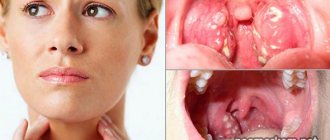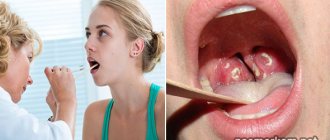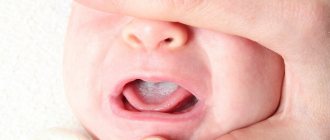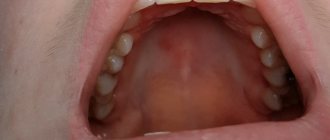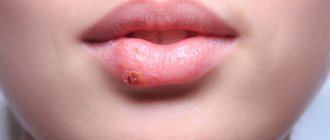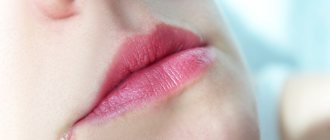Types of the disease, their symptoms
There are a large number of types of disease, each of which has its own symptoms. Cheilitis happens:
- catarrhal, resulting from injury. Its characteristic symptoms are redness, peeling, swelling and soreness of the lips.
- eczematous, developing due to the occurrence of eczematous processes. The reason is an allergy to a certain type of food, cosmetics (lipstick, cream).
- glandular, associated with an abnormality of the salivary glands. It happens that cheilitis on the lips accompanies periodontal disease, lupus, etc. The lower lip often suffers and begins to peel.
- meteorological. It is caused, as the name suggests, by weather conditions (high air humidity, strong wind, decreased or increased temperature, exposure to ultraviolet radiation, etc.).
- exfoliative, characterized by a chronic course. It is divided into two forms - dry (the blood supply to the lips is disrupted and, as a result, dry scales are formed, which can be easily removed, but after a few days they appear again) and exudative (the border swells and becomes inflamed, crusts appear).
- angular, called jam. Due to streptococci, inflammation begins in the corners of the lips. Vitamin deficiency and frequent licking of lips can also provoke it.
- atopic, accompanying atopic dermatitis. The red border of the lips flakes and itches, the lips crack.
- hypovitaminosis, which occurs due to a lack of B vitamins. Dryness and a pronounced burning sensation affect not only the lip area, but also the entire mucous membrane of the mouth, including the tongue. In this case, the mucous membrane turns red, and vertical cracks form in the area of the red border.
Regardless of the type of cheilitis, common symptoms will be:
- peeling of the lips, observed both only near the border and over the entire surface;
- swelling and swelling, burning and itching in the lips, the appearance of cracks and crusts on them.
Lip cancer
Cancer on the lips are neoplasms that are malignant in nature. In the early stages, the disease manifests itself in the form of ulcers that constantly bleed. In appearance they are similar to herpes. Lumps and increased salivation may also occur.
Attention ! If the ulcers do not go away when using medications, the patient should seek help from a doctor.
The treatment regimen directly depends on the degree of its development, as well as on the clinical picture. In most cases, treatment is carried out using cryotherapy, radiation or surgery. Patients are also recommended to undergo chemotherapy using special drugs.
Causes of pathologies
- Diseases of the lips in humans in most cases are observed with a weakened human immune system, which cannot cope with viruses and bacteria that attack the body.
- If the diet lacks vitamins, this can lead to a pathological process.
- Human lips are full of nerve endings. With nervous overstrain, they become overfilled with blood, which creates an unaesthetic appearance.
- Lip diseases are observed with frequent hypothermia or overheating.
- If the patient has allergic reactions to cosmetics or food, then damage may occur against this background.
- Improper installation of braces or veneers creates skin irritation, which leads to a pathological condition.
- Lip diseases can also be caused by bacteria and fungi.
To ensure adequate treatment of diseases on the lips, it is necessary to establish their cause.
The course of Fordyce's disease
When Fordyce's disease appears, the sebaceous glands on the lips become enlarged. In appearance they look like pustules. The occurrence of a pathological process is quite often observed against the background of hyperplasia of the sebaceous glands.
To treat cysts, it is recommended to use retinol-containing ointments. To hide cosmetic defects, permanent makeup is used.
To remove old rashes, a laser should be used, sometimes cryodestruction or electrocoagulation is used. Unfortunately, not all treatments are highly effective, so relapses occur in 80% of the population.
Treatment of herpes on the lips
Today there are no drugs that would completely destroy the herpes virus in the human body. However, there is a group of special antiviral agents that effectively suppress the reproduction of HSV-I.
Recurrences of herpes that affect the lips or nasal mucosa respond well to local treatment with cream or ointment. In more severe cases, your doctor may recommend pills.
If antiviral cream
start using it for existing rashes, healing occurs faster than with other treatment methods.
It must be remembered that early initiation of treatment is the key to success. Before the bubbles appear, the lips become very sensitive, itching and tingling occur. And if the disease begins to be treated at the stage of these precursors, then rashes may not appear, and recovery will occur as soon as possible.
INITIAL CONSULTATION
from 2,500 rub.

